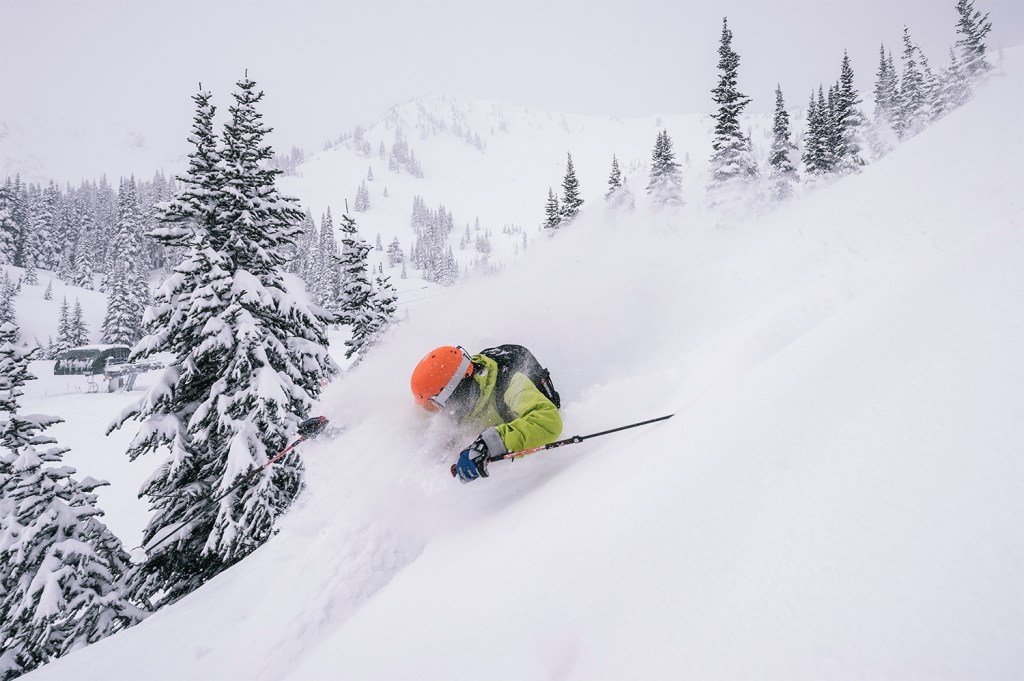Riding the Lenawee Mountain Lift to the top of Colorado’s Arapahoe Basin Ski Area, I heard the sharp crack of explosives popping around Loveland Pass. On the backside of the mountain, ski patrollers were busy clearing out the foot of fresh snow that had fallen the night before in an effort to open the resort’s steeper terrain to skiers and riders. There was a reason I was at A-Basin, braving holiday crowds and battling lift lines rather than venturing into the backcountry. Those pops reassured me that I’d made the right decision to ski inbounds today.
Avalanche explosives are just one of the tools ski areas use to mitigate risks to the throngs of skiers and riders shredding their terrain. Nonetheless, on that day, I decided to tuck my avalanche beacon into my pocket—just in case. It was the first time I’d ever worn my beacon to ride chairlifts.
On January 17, a large avalanche ripped down a steep line, called K3 chute, off New Mexico’s 12,481-foot Kachina Peak, burying two skiers, who later died from their injuries. The chute is inbounds at Taos Ski Valley and the skiers were in open terrain that had been mitigated throughout that season and as early as that morning, according to a statement from Taos Ski Valley. When I heard that news, I was reminded of this: There is no such thing as guaranteed safety.
Out of the more than 250 avalanche fatalities in the U.S. during the last 10 ski seasons (from 2008/2009 to 2017/2018), eight have occurred inbounds, according to statistics compiled by the Colorado Avalanche Information Center (CAIC) and the National Ski Areas Association (NSAA). Six of those deaths happened in inbounds terrain that was open to skiers, while two occurred in zones that had been closed by ski patrol at the time of the incident. Look back even further and you’ll find that 21 skiers have been killed in inbounds slides since 2000, according to CAIC.
This doesn’t mean getting caught in an avalanche at a ski resort is a common thing—it’s still very rare. In the last 10 seasons, inbounds avalanches make up only 3 percent of all avalanche deaths, according to CAIC data. In the same period, NSAA estimates there were approximately 556 million skier visits across the U.S., bringing the odds of being killed by an inbounds avalanche to 1 in 46 million. By comparison, the 10-year industry average for overall fatalities of inbounds skiers and riders—due to collisions, falls and other accidents—is 38 people per year, according to NSAA, which is less than one fatality per every one million skier visits.

Inbounds avalanches are extremely rare, but experts say snow is never 100 percent safe.
Ethan Greene, a former ski patroller, longtime avalanche forecaster and CAIC director since 2005, said fatalities only tell part of the story: The center doesn’t collect data on inbounds avalanches that didn’t result in a fatality because ski areas aren’t typically required to report those to their local avalanche center. “We do everything by cooperation,” Greene said, which means resorts that don’t want to report their inbounds slides to CAIC don’t have to. “If we go investigate something at a ski area, it’s usually because they asked us to come or potentially because the Forest Service wants us to.”
The result? The center doesn’t know how many unintended avalanches take place inbounds at ski resorts—that data simply isn’t recorded. “The ski areas have very good snow safety programs,” he said, referring to resorts’ practices of sending ski patrollers to bomb or ski cut avalanche-prone slopes to prerelease slides and help mitigate risk for the general public. “They are constantly working to provide a safer product for people. That said, it’s the mountains and you can’t ever make it 100 percent safe.”
Greene said there are things skiers can do to help protect themselves from the possibility of inbounds avalanches. The most obvious way to mitigate your risk, he said, is to stay in open terrain and not duck ropes. Patrollers continuously monitor snow conditions around the mountain and their first step toward ensuring skiers don’t unwittingly spark a slide is to close at-risk terrain.
For certain skiers and riders on certain days at the resort, Greene also recommends carrying the same avalanche safety gear you would carry into the backcountry, including a beacon, shovel and probe. When riding with your beacon, it should be on and set to transmit. “If you’re going into hike-to terrain, skiing steeper stuff or if you’re an expert skier—especially on a powder day—wearing a beacon and skiing with a partner is not a bad idea,” he said. RECCO® reflectors—small patches sewn into outerwear and other products—can also fulfill some of those same purposes around resorts.
In the event of an inbounds slide, Greene said ski patrol’s first step is often to check the slide path with avalanche beacons and RECCO detectors, which can help make pinpointing buried skiers more precise. Skiing with a partner, being cautious of hazards like cornices and tree wells and taking a local avalanche awareness course are other smart calls. I spoke to a handful of ski patrollers at several resorts for this story and many had similar sentiment: Ski resorts are controlled for avalanche danger, but snow is snow and you can never guarantee 100 percent safety.
In the end, Greene said, skiing a resort on a powder day rather than venturing into the backcountry is still the safer bet. “I don’t want people to not have confidence in ski areas,” he said. “But you can’t reduce the risk to zero.”
